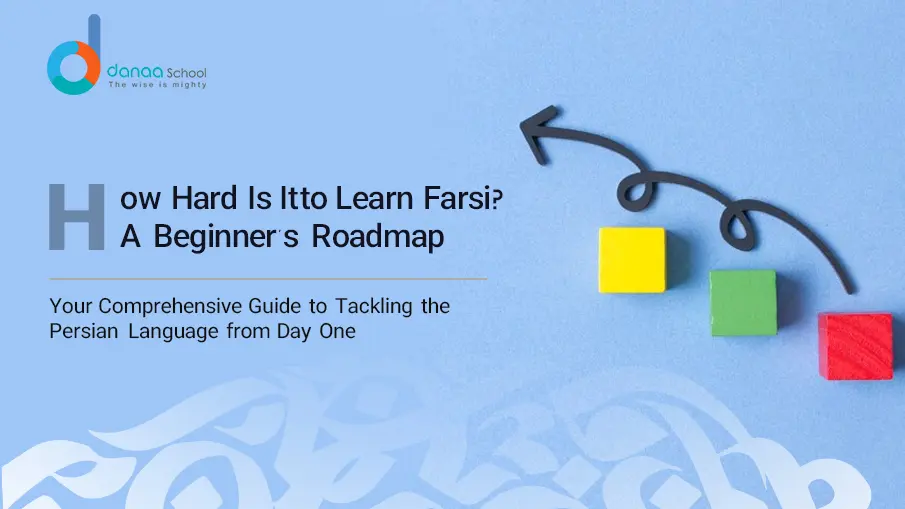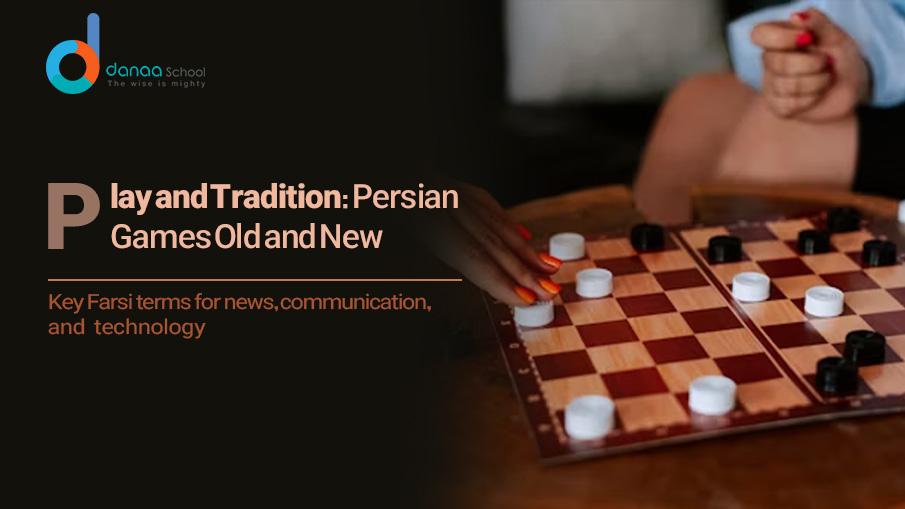Learning a new language can often feel like a formidable challenge. Still, when it comes to Farsi (also known as Persian), the experience varies greatly depending on several factors. While some may perceive Farsi as a difficult language to master, especially because of its unique script, others find it surprisingly approachable. So, how hard is it to learn Farsi? The answer isn’t one-size-fits-all but it depends on your linguistic background, dedication, and learning strategies.
Farsi is spoken predominantly in Iran, Afghanistan (where it’s called Dari), and Tajikistan (where it’s called Tajik), offering learners the opportunity to connect with a rich cultural history that spans centuries. Let’s dive into what makes Farsi both challenging and accessible for different learners, and explore practical methods to speed up the learning process.
Understanding the Complexity of Learning Farsi
Farsi Grammar: Surprisingly Simple
At first glance, Farsi might seem intimidating, but its grammatical structure is surprisingly straightforward. Unlike many other languages that are notorious for complex rules, Farsi offers a simplicity that is appealing to beginners.
For starters, Farsi doesn’t differentiate nouns by gender, which is a breath of fresh air for those familiar with languages like French or Spanish. In languages with gendered nouns, learners often struggle with memorizing whether an object is masculine or feminine—an obstacle that doesn’t exist in Farsi. Additionally, verb conjugations in Farsi are not as complex as in languages like Arabic, where verbs are conjugated according to gender and number.
Farsi verbs, however, do require conjugation based on tense. Like English, Farsi has three primary tenses—past, present, and future. Although the past tense can be slightly tricky due to the introduction of compound tenses, overall, it’s still less daunting compared to many other languages. The lack of grammatical gender and the relatively simple verb system make Farsi grammar easier to digest, especially for English speakers.
One minor challenge in Farsi grammar lies in word order. Farsi typically follows a subject-object-verb (SOV) structure, which is different from English’s subject-verb-object (SVO) format. For example, instead of saying, “I eat an apple,” you would say “I an apple eat.” It can take some getting used to, but with practice, it becomes second nature.
Persian Alphabet and Script: A New World
For many learners, the most challenging aspect of Farsi is its script. Written from right to left, Farsi uses a version of the Arabic script with 32 letters, many of which change their shape depending on where they appear in a word. Unlike languages that use the Latin alphabet (like English or Spanish), Farsi introduces a completely new visual and conceptual challenge.
Each letter in Farsi can appear in up to four different forms: isolated, initial, medial, and final, which means that learners must not only memorize the letters but also how they connect and change shape depending on their position within a word. For instance, the letter “beh” (ب) looks different at the start of a word than it does in the middle or at the end. This fluidity of letterforms can slow down the reading process for beginners, but with regular practice, the script becomes more intuitive over time.
Another hurdle is vowel representation. Farsi omits most short vowels in writing, which can make deciphering unfamiliar words difficult. Imagine reading English words without vowels—context and vocabulary knowledge become essential in such cases. However, once you learn common words and patterns, this challenge decreases.
Pronunciation: Easier Than It Seems
While the script may be daunting, pronunciation in Farsi tends to be easier than many other languages. One significant advantage is that Farsi is not a tonal language, unlike Mandarin or Thai, where meaning can change based on the pitch of a word. This lack of tonal complexity makes Farsi far more approachable for speakers of languages like English, French, or German.
There are, however, a few tricky sounds that learners may find unfamiliar. Farsi includes several guttural sounds, such as “gh” (غ) and “kh” (خ), which do not exist in English and can be difficult to master at first. These sounds are produced in the back of the throat and require some practice, but they are not insurmountable. Additionally, regional accents in Iran, Afghanistan, and Tajikistan can introduce slight variations in pronunciation, though these are usually easy to pick up with exposure.
Compared to languages with intricate tonal systems or extensive case declensions, Farsi’s pronunciation challenges are relatively mild. With consistent listening practice—through media like Persian music, TV shows, and conversation with native speakers—learners can overcome these hurdles.
Effective Methods for Learning Farsi
Immersing yourself in a language is the most effective way to learn it, and Farsi is no exception. For rapid progress, surrounding yourself with native speakers and authentic Farsi media is essential. Language exchanges, travel to Farsi-speaking countries, and constant exposure to real-life conversations make a world of difference. Apps and online courses are helpful tools, but nothing compares to full immersion in Persian culture and language.
Watching Iranian TV shows, listening to Farsi music, and reading Persian poetry (from luminaries like Rumi or Hafez) will help you become familiar with the rhythm and flow of the language. Engaging with native speakers—whether through language exchange apps like HelloTalk or by practicing with friends—also sharpens your listening and speaking skills.
For learners unable to travel to a Farsi-speaking country, virtual immersion through online communities, chatrooms, or video calls can still provide substantial benefits. Real-life interaction exposes you to colloquial phrases, slang, and cultural nuances that you wouldn’t necessarily encounter in textbooks.
Resources and Tools to Learn Farsi
When it comes to finding resources for learning Farsi, learners are fortunate to have access to numerous quality tools. Comprehensive textbooks like Teach Yourself Persian or Colloquial Persian offer structured lessons that cover essential vocabulary, grammar, and phrases.
Online courses from platforms like Danaa School provide interactive lessons with native speakers and a structured curriculum. Additionally, websites like Omniglot offer valuable information about the Persian alphabet and pronunciation tips, while BBC Languages offers basic Farsi tutorials for free.
To focus on conversational skills, platforms like HelloTalk or Tandem allow learners to connect with native Farsi speakers around the world for language exchange, fostering communication through text, audio, and video.
Understanding Iran and Persian Culture
Learning Farsi is not just about mastering a language—it’s also about diving into a rich cultural tapestry that dates back thousands of years. Persian culture is renowned for its literature, with poets like Hafez and Rumi capturing the imaginations of readers worldwide. Understanding Persian poetry and literature adds depth to the language learning process, revealing layers of meaning in words, phrases, and idiomatic expressions.
Moreover, being aware of Iranian social norms and traditions can greatly enhance your Farsi learning experience. Farsi speakers place great importance on politeness and respect, which is reflected in the language itself. Understanding how to greet others, express gratitude, and interact in various social settings will not only improve your language skills but also help you build stronger relationships with native speakers.
How Long Does It Take to Learn Farsi?
The answer to this depends on how much time you commit to studying. For someone dedicating a few hours each week, it might take 12-18 months to learn Farsi. If you’re looking for full fluency, it could take several years. However, with consistent practice and the right guidance—such as from Danaa School’s Farsi course—you can significantly reduce that time.
Why Danaa School’s Farsi Course Is the Perfect Fit
If you’re looking for an efficient and enjoyable way to learn Farsi, Danaa School offers an excellent online Farsi course with professional, experienced instructors. They provide a structured curriculum that covers everything from basic grammar to advanced conversation skills.
Danaa’s Instructors: Experts in Farsi
The instructors at Danaa School are native speakers who bring not only linguistic knowledge but also cultural insights, which is essential when learning a language. They use modern teaching methods and tailor lessons to fit your specific needs, whether you’re a complete beginner or looking to refine your skills.
Meet Danaa’s Professional Tutors
-
- Lida A. (United States)
Lida brings a wealth of experience in teaching Persian to non-native speakers. With a 5-star rating, her lessons emphasize conversational skills and cultural immersion. She’s taught over 14 students and offers a structured, enjoyable learning path for beginners.
- Lida A. (United States)
-
- Sara J. (Canada)
Sara is a dedicated instructor specializing in both Persian and Farsi. Her lessons are designed for learners at all levels, focusing on grammar, vocabulary, and sentence structure. Sara’s engaging teaching style has helped students build a solid foundation in Farsi.
- Sara J. (Canada)
-
- Saeedeh M. (Iran)
With a deep understanding of Persian literature and culture, Saeedeh offers an insightful learning experience. Her classes go beyond language, diving into the cultural aspects of Farsi, making her ideal for students who want to connect with Persian heritage.
- Saeedeh M. (Iran)
-
- Nafiseh R. (Turkey)
As a community tutor, Nafiseh focuses on creating a friendly, conversational environment. Her Farsi lessons help students build confidence in everyday speaking, making her classes perfect for beginners who want to improve their fluency.
- Nafiseh R. (Turkey)
FAQs
How long does it take to learn Farsi?
The time it takes to learn Farsi varies depending on the learner’s background and dedication. On average, learners need around 600-750 hours of study to achieve conversational fluency.
Is Farsi harder than Arabic?
While Farsi and Arabic share some script similarities, Farsi is generally easier to learn. Its grammar is simpler, with fewer exceptions, and it lacks the gendered nouns and complex verb conjugations found in Arabic.
Can you learn Farsi on your own?
Yes, it is possible to learn Farsi independently, especially with the abundance of online resources, apps, and books. However, practicing with native speakers will significantly speed up your progress.
Do I need to know Arabic to learn Farsi?
No, knowledge of Arabic is not required to learn Farsi. While Farsi has borrowed many Arabic words, the two languages have different grammatical structures and rules.
Is Farsi a useful language to learn?
Yes, Farsi is an important language in the Middle East and Central Asia. It opens the door to understanding Persian culture, literature, and history, and it is useful for anyone interested in working or traveling in Iran, Afghanistan, or Tajikistan.
How can I practice speaking Farsi?
You can practice speaking Farsi through language exchange platforms like HelloTalk or Tandem, attending online classes, or engaging with native speakers through video calls.
Conclusion
So, how hard is it to learn Farsi? It comes with its challenges, but with dedication, the right tools, and perhaps a little help from Danaa School’s Farsi course, it’s absolutely doable. Remember, every new language opens the door to a rich cultural experience, and Farsi is no different. Plus, imagine the pride you’ll feel when you finally master it!
Take the first step on your Farsi learning journey today by exploring Danaa School’s course—your future self will thank you.
Ready to start learning Farsi? Check out Danaa School’s Farsi course and start mastering the language today! Enroll Now at Danaa School.










